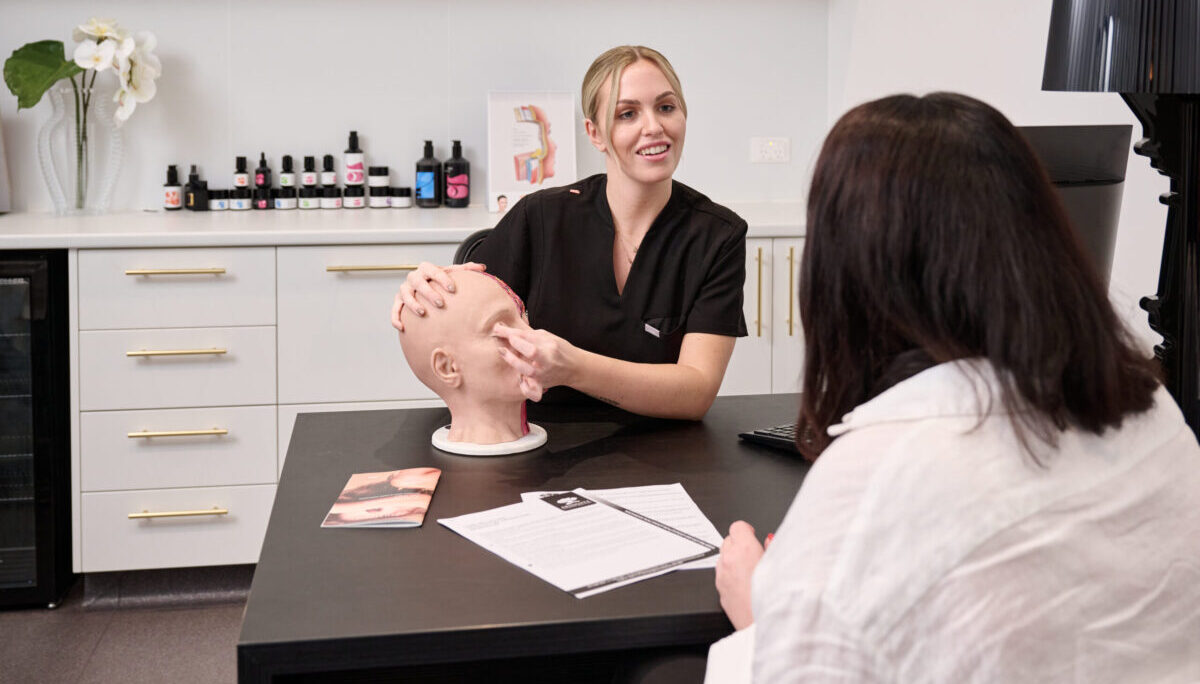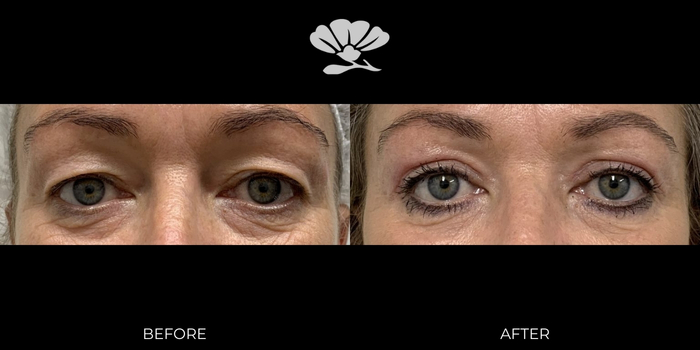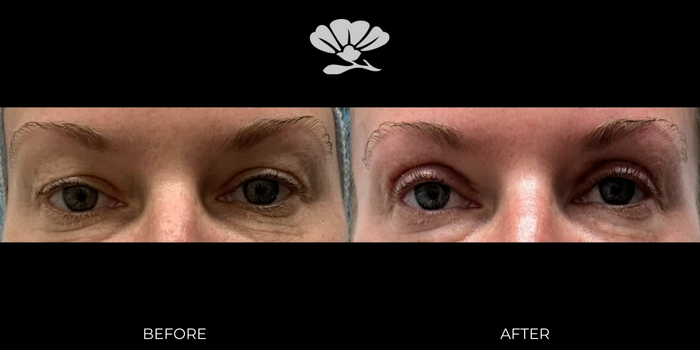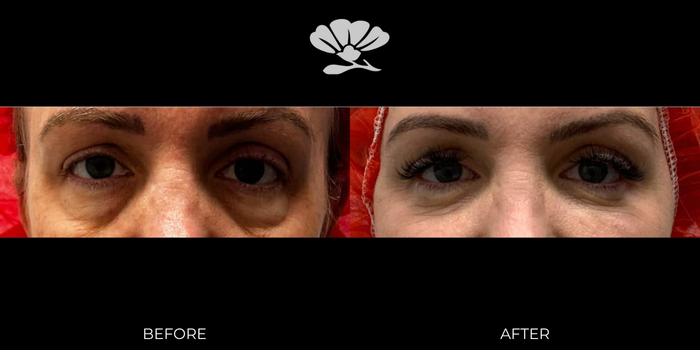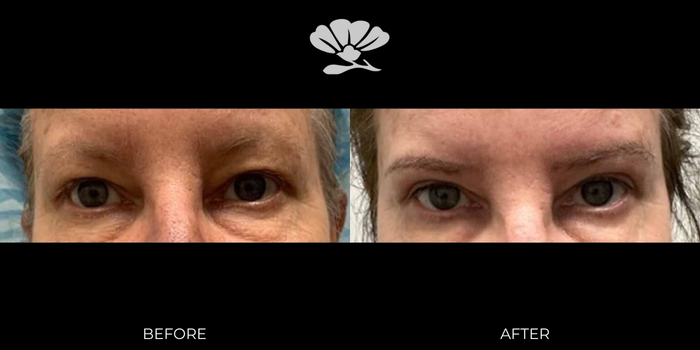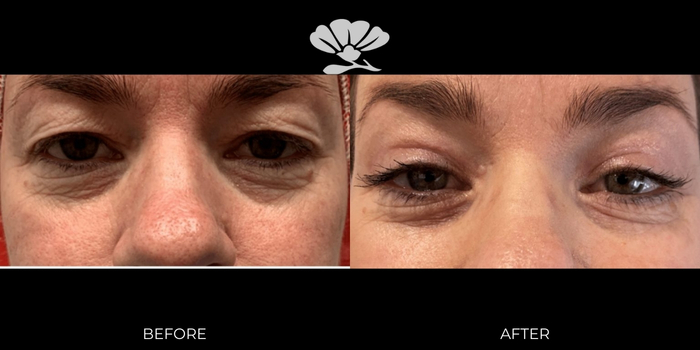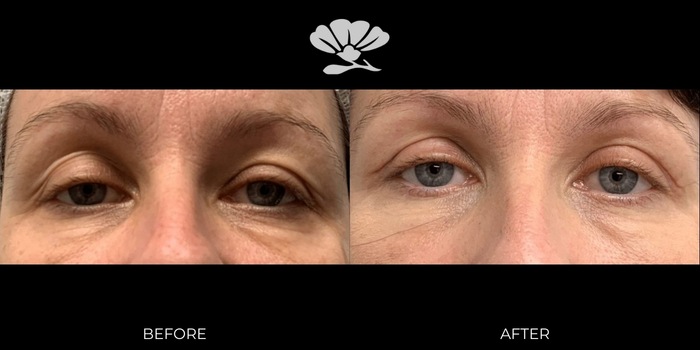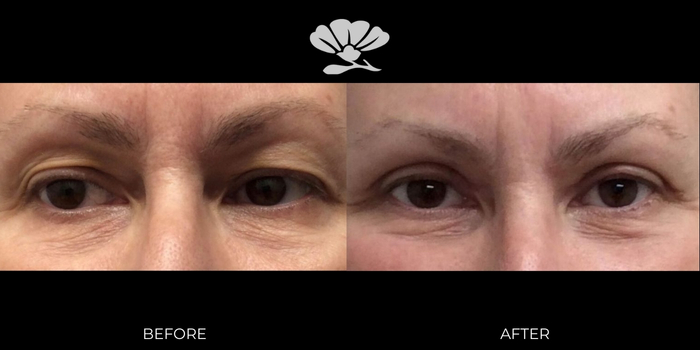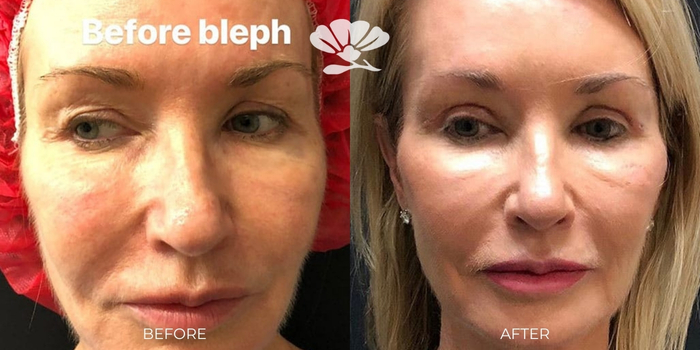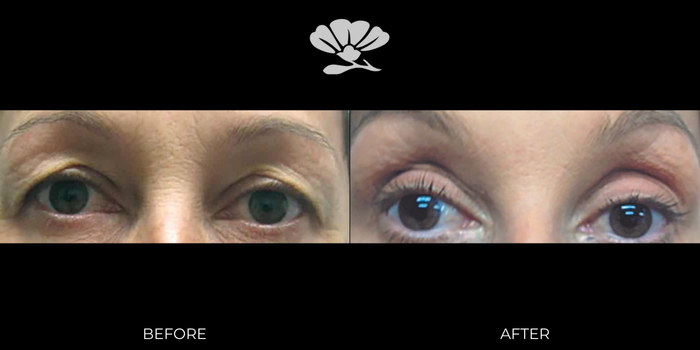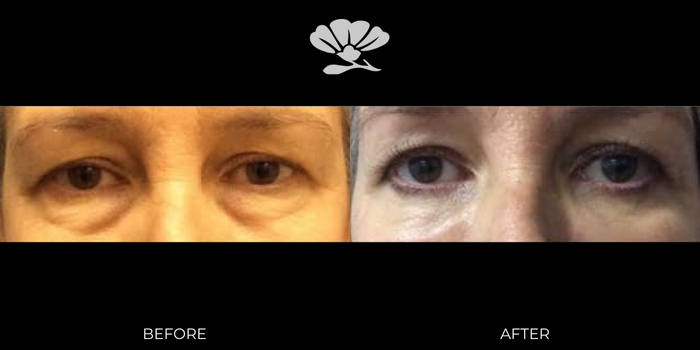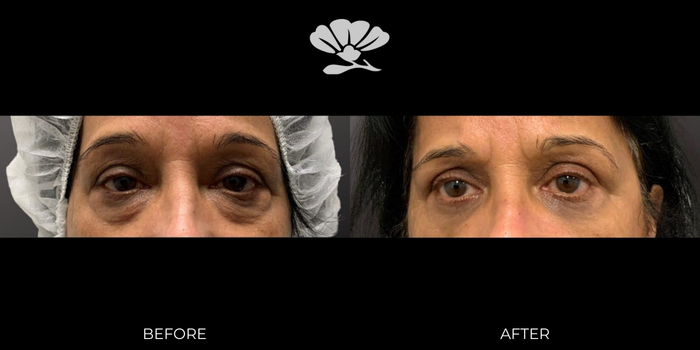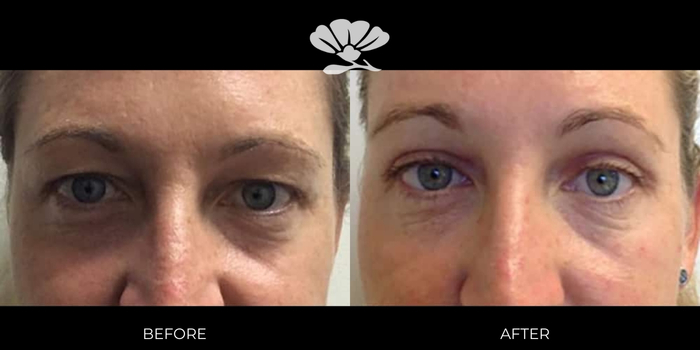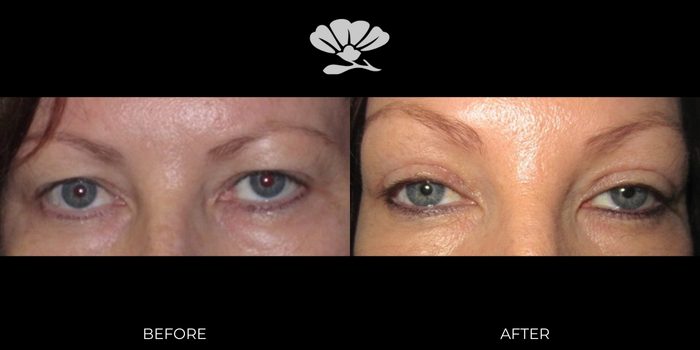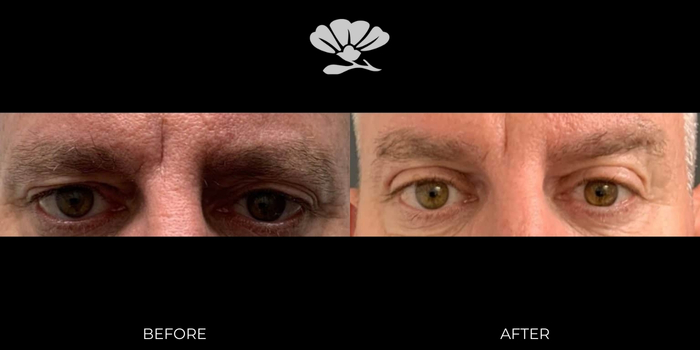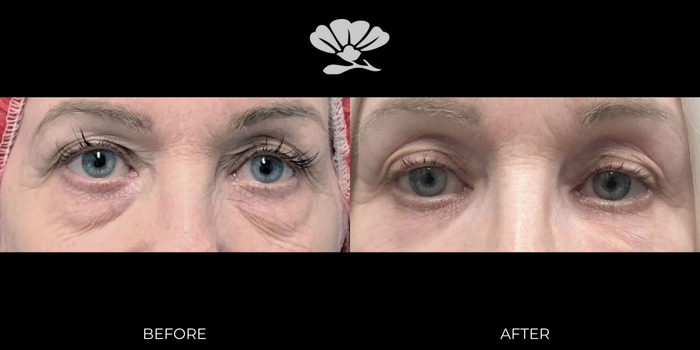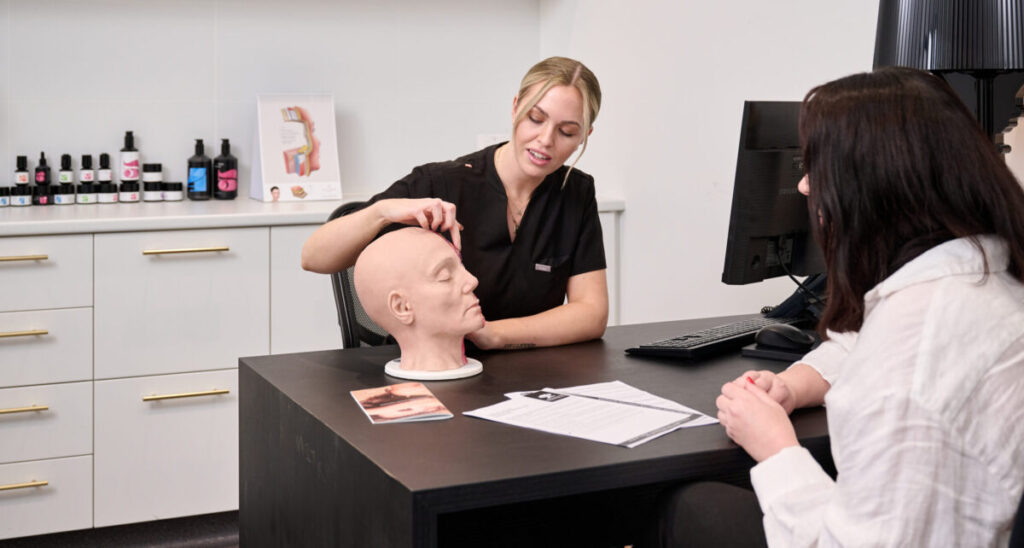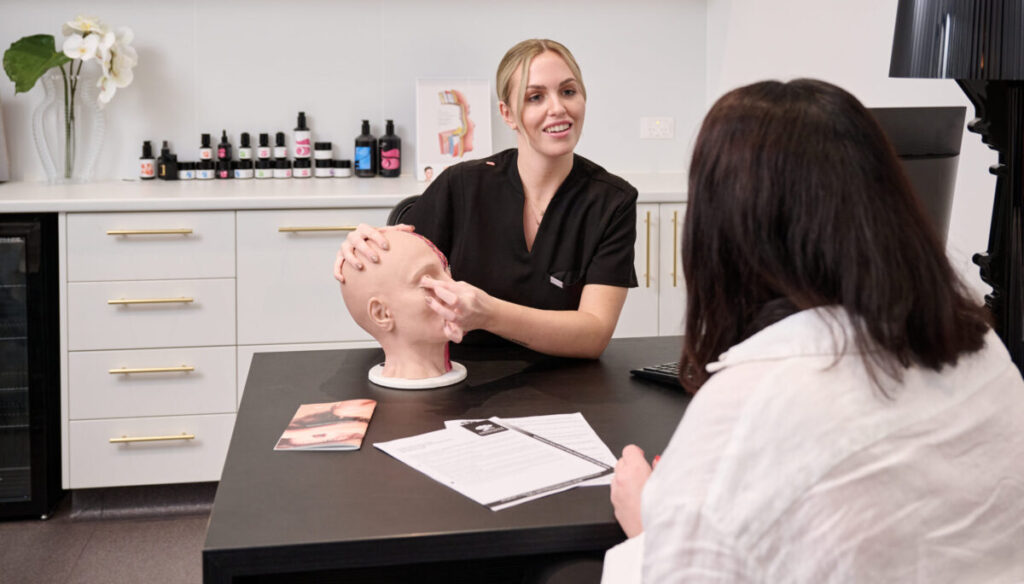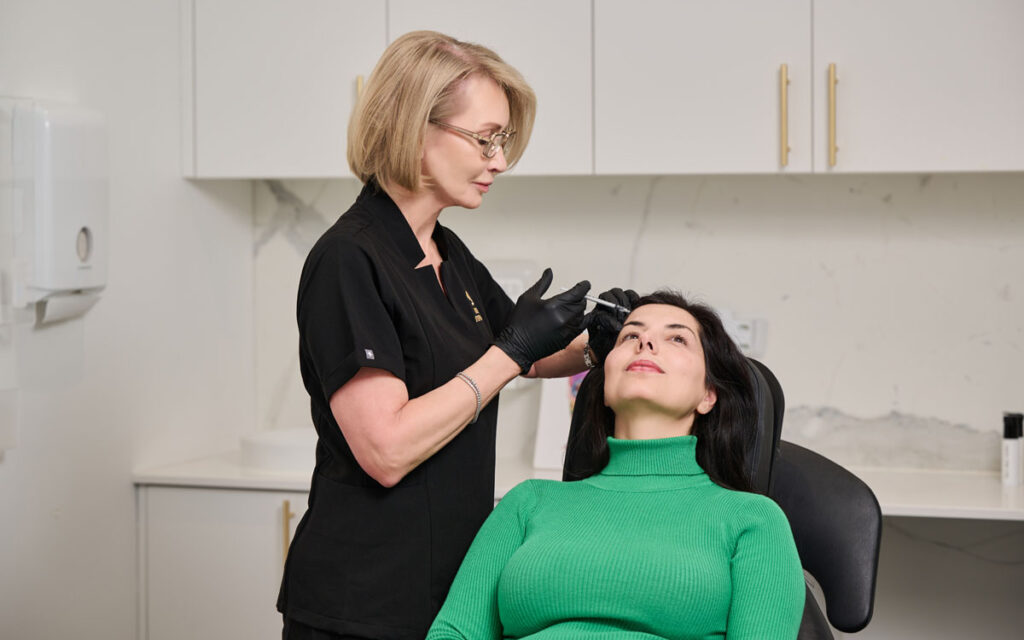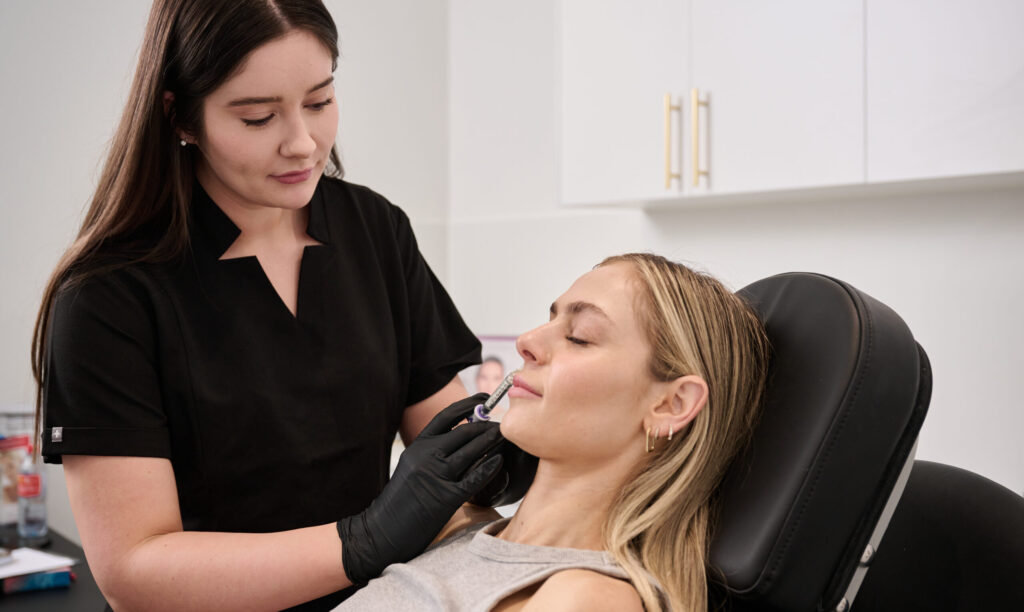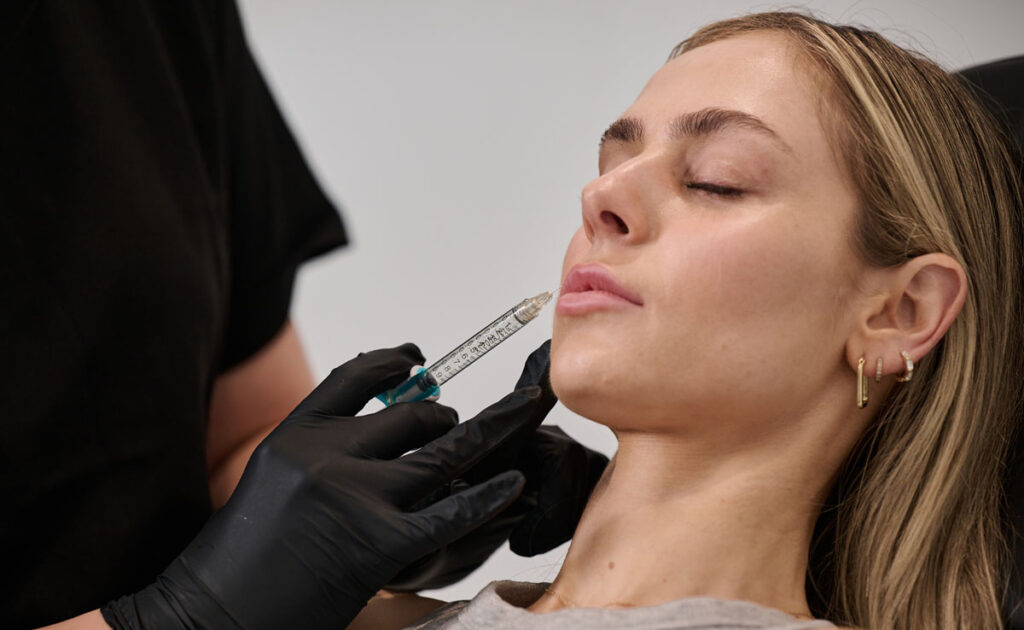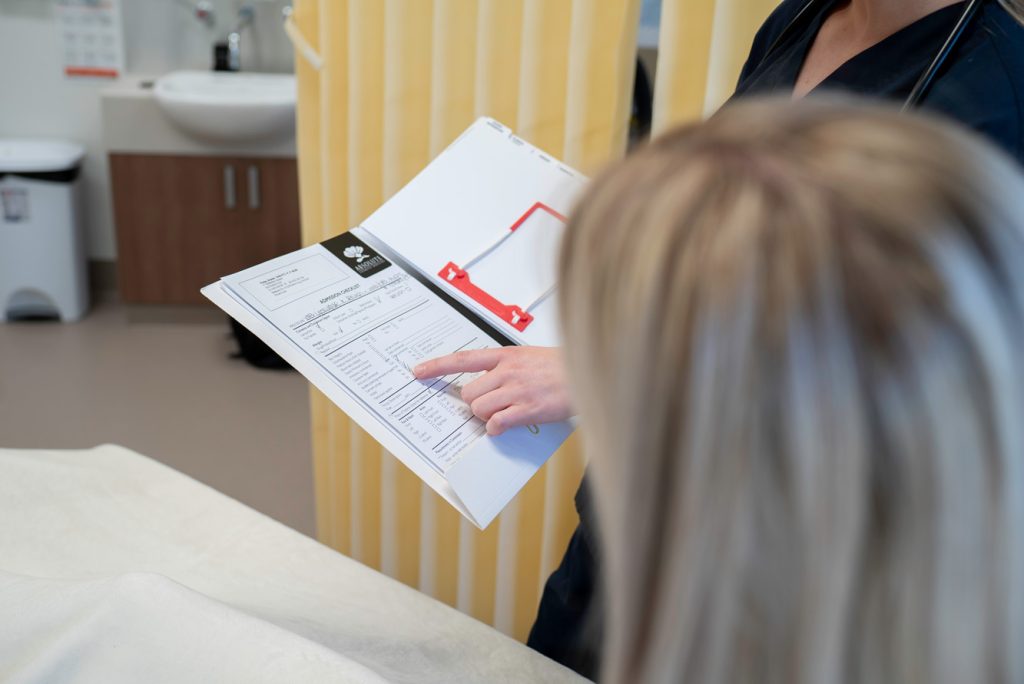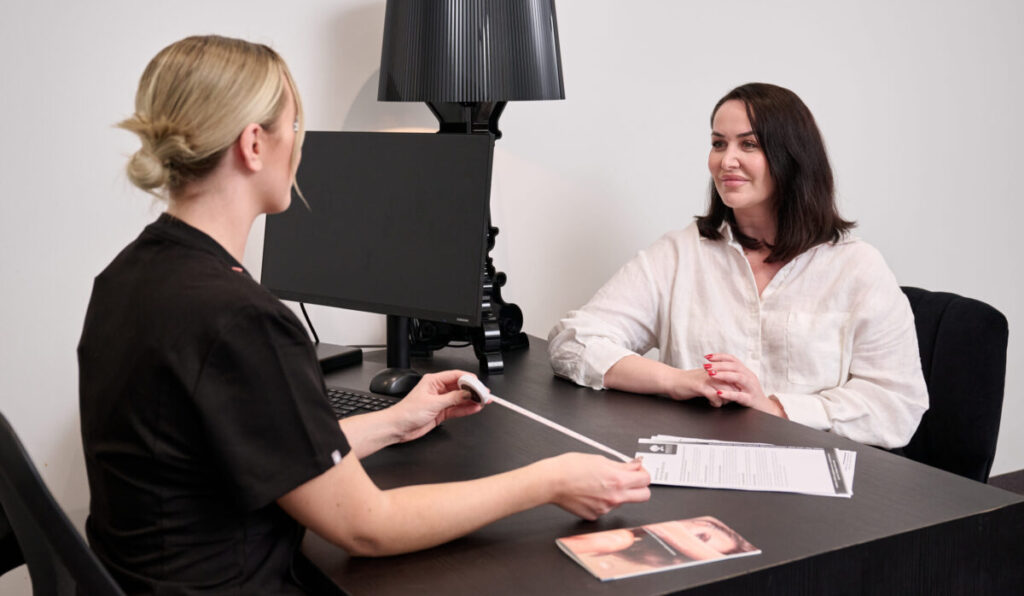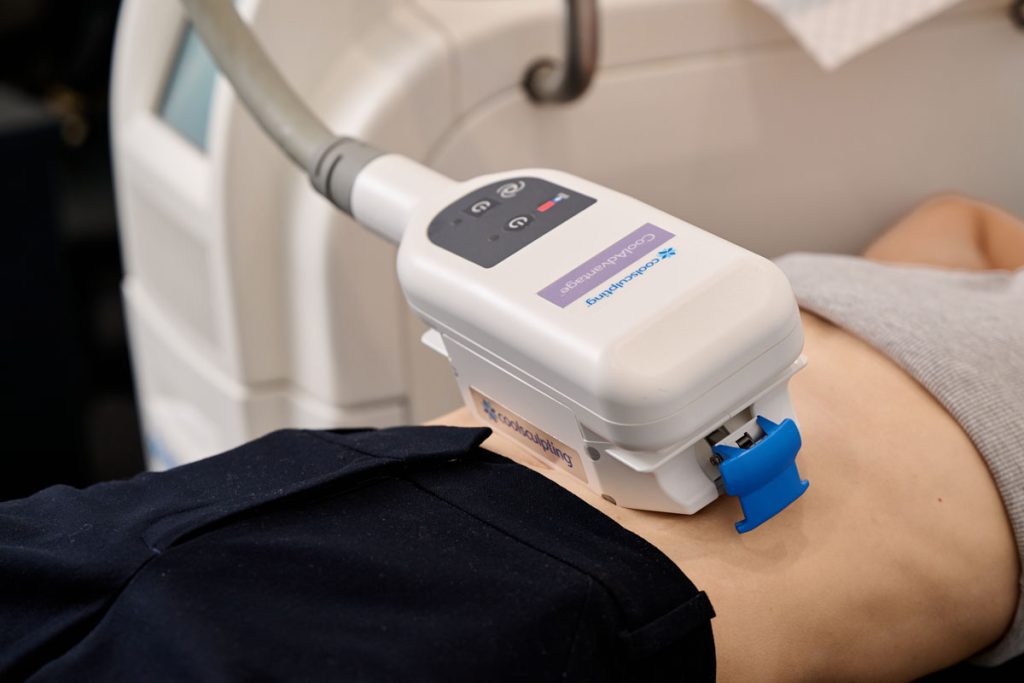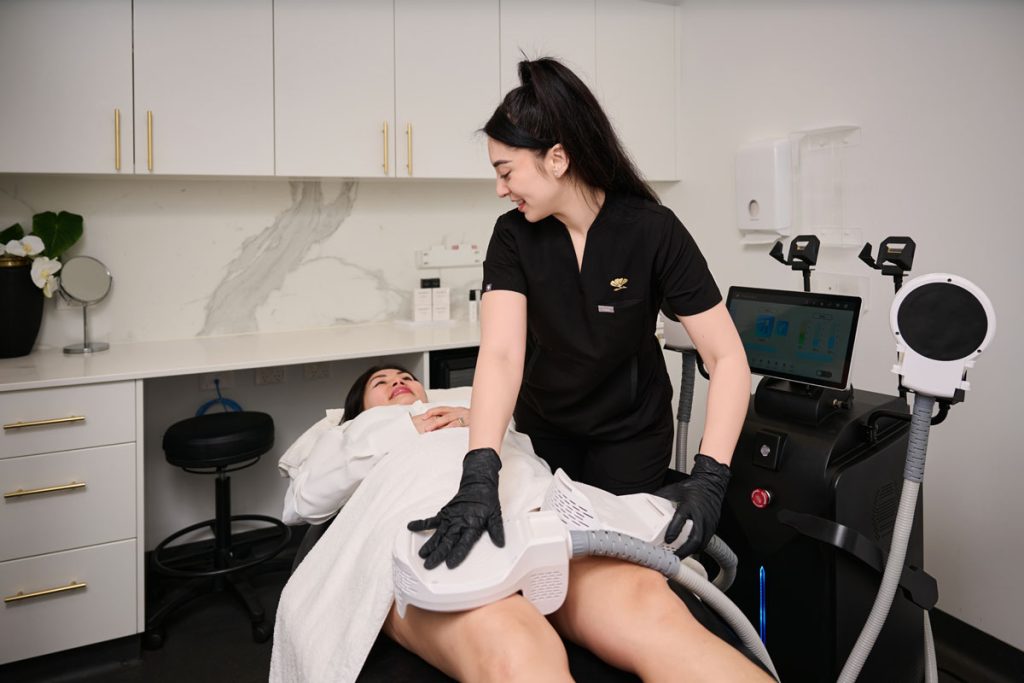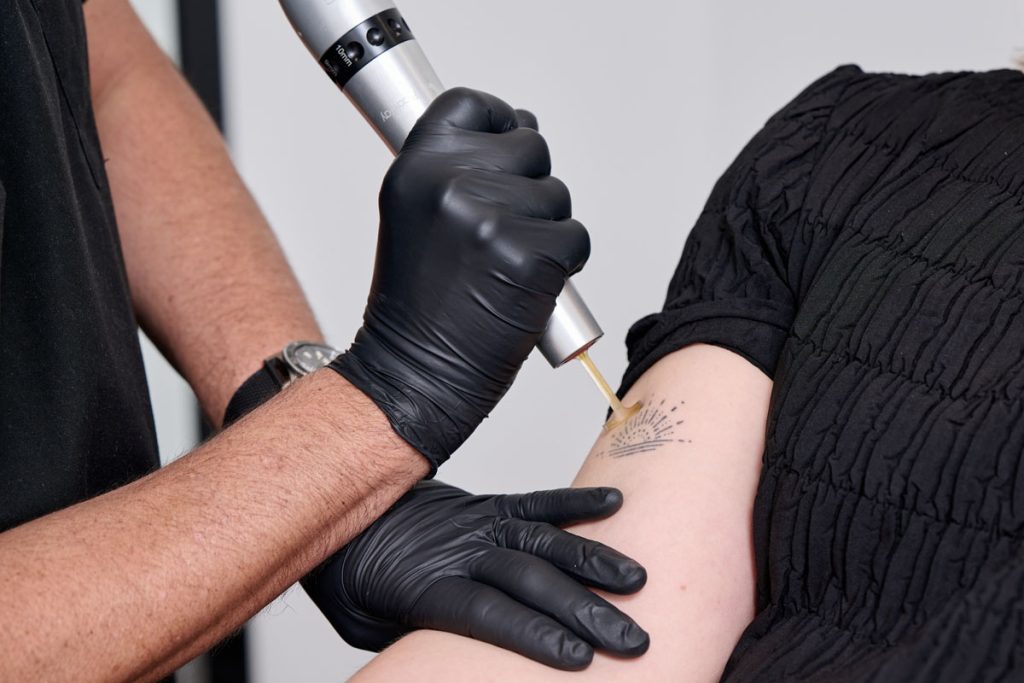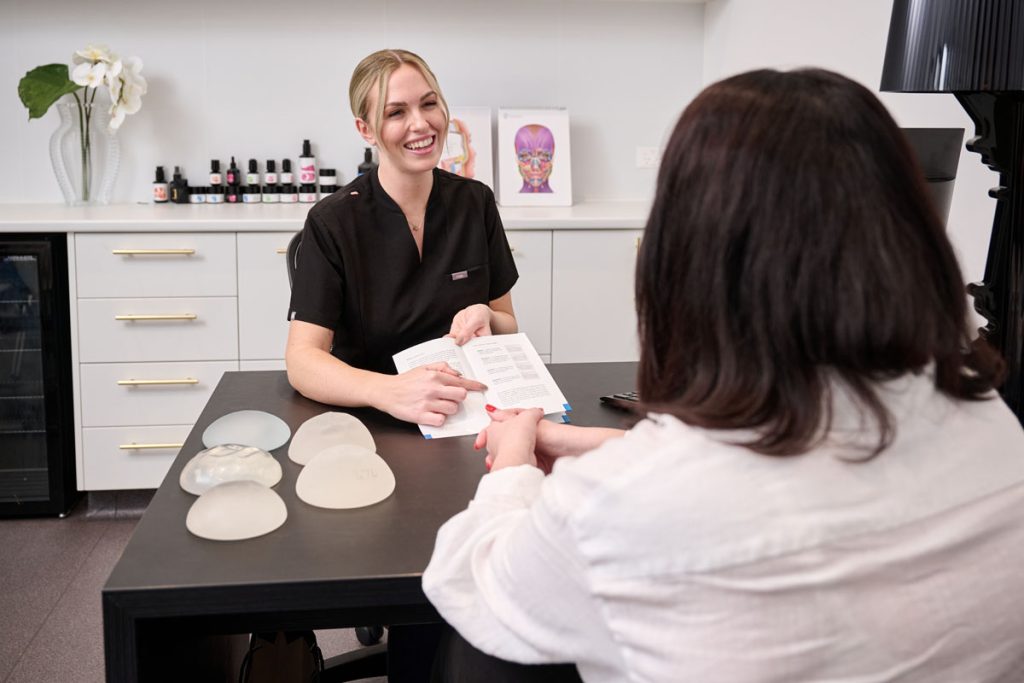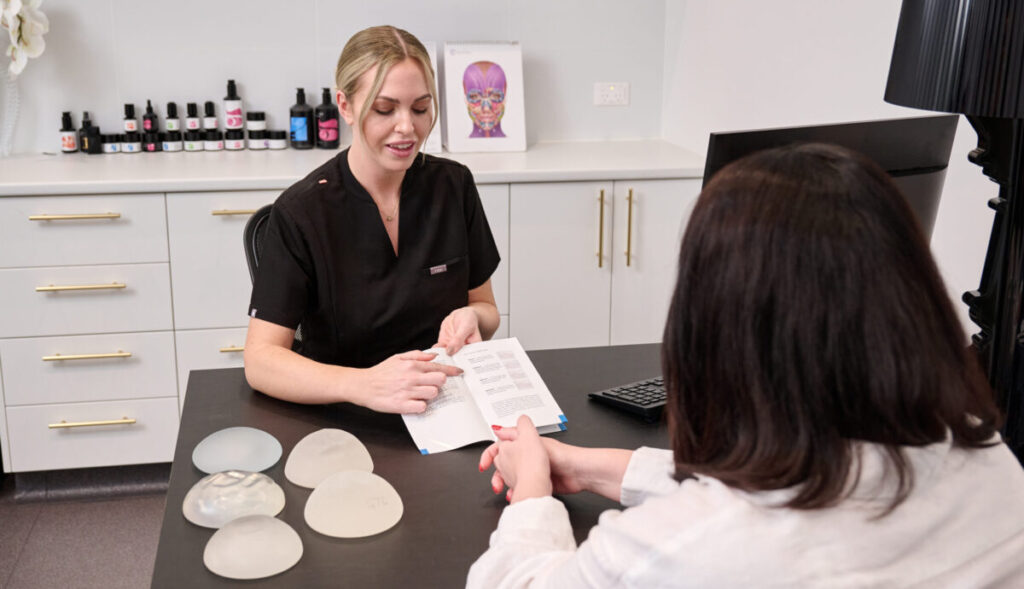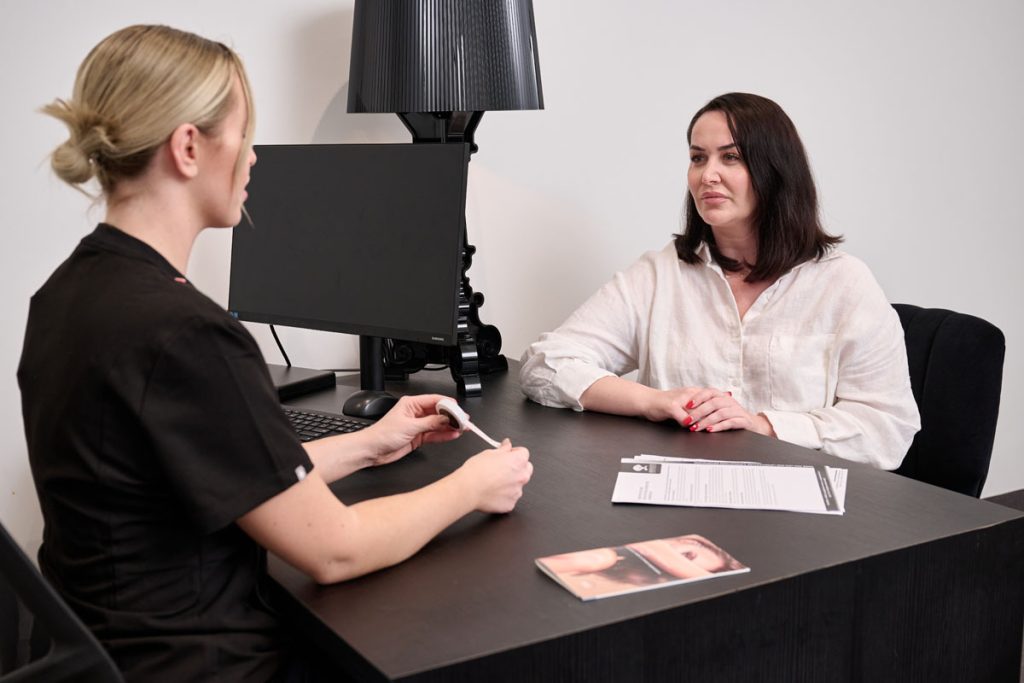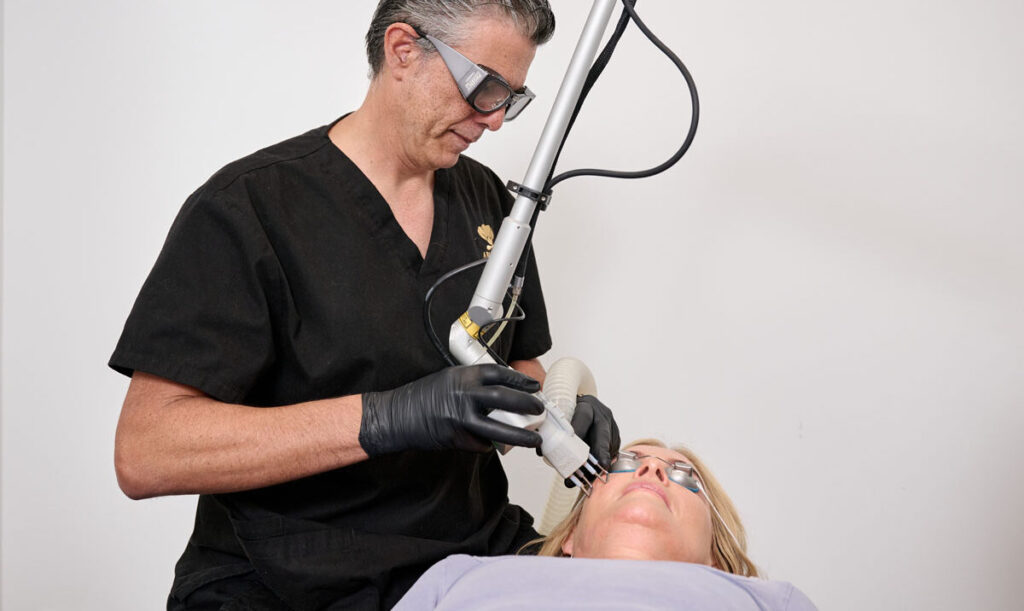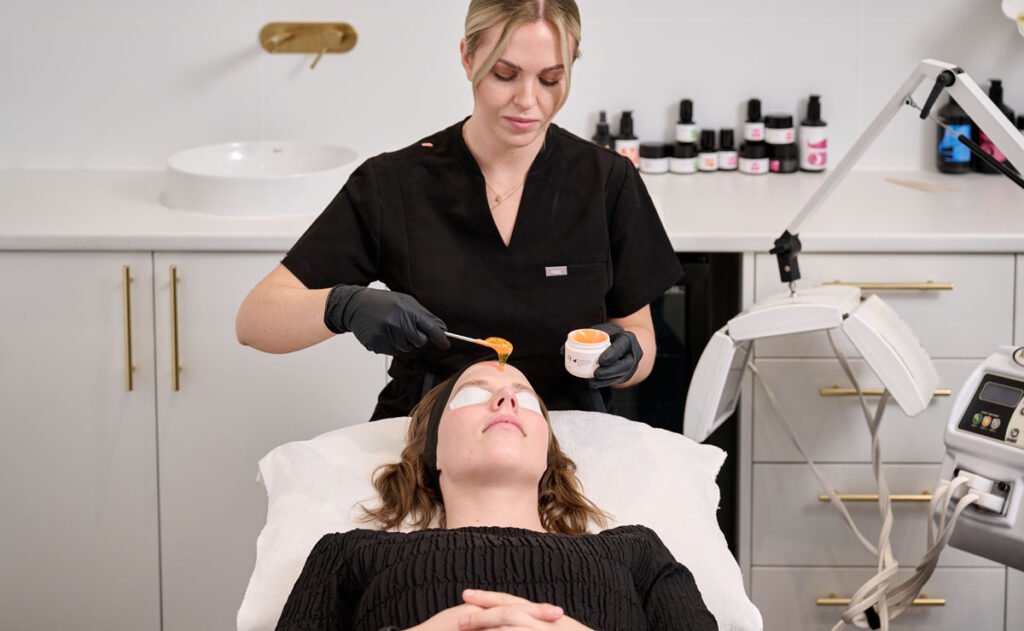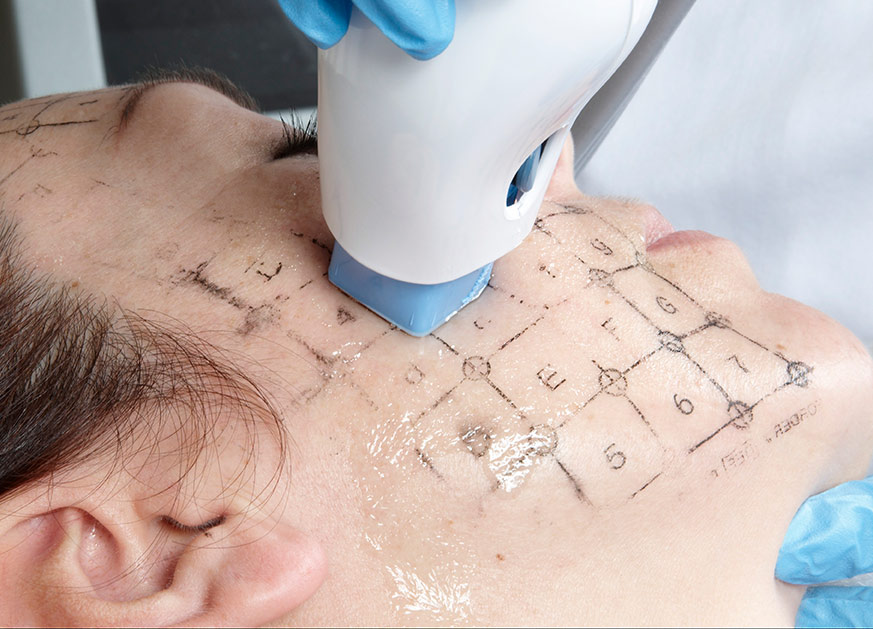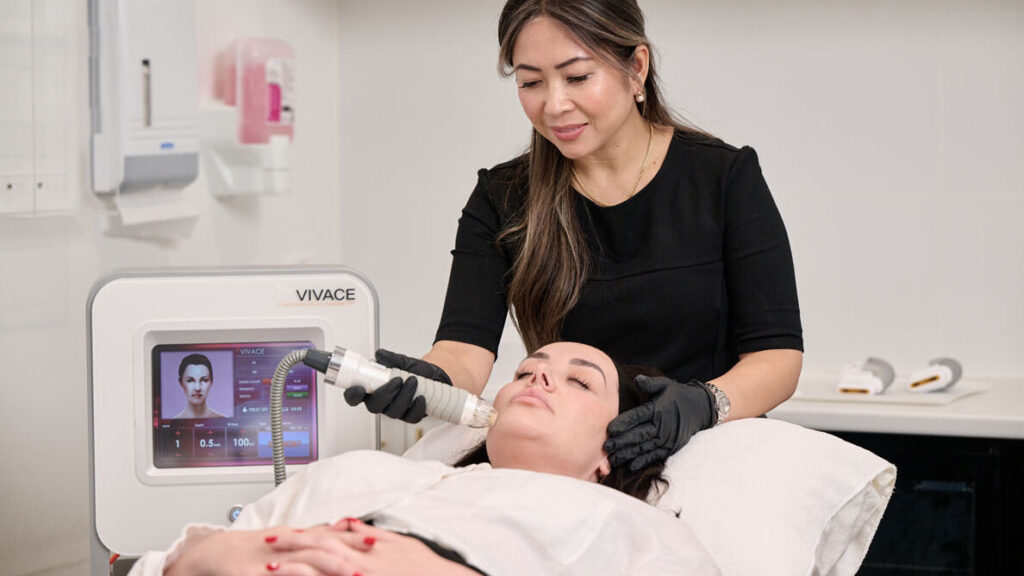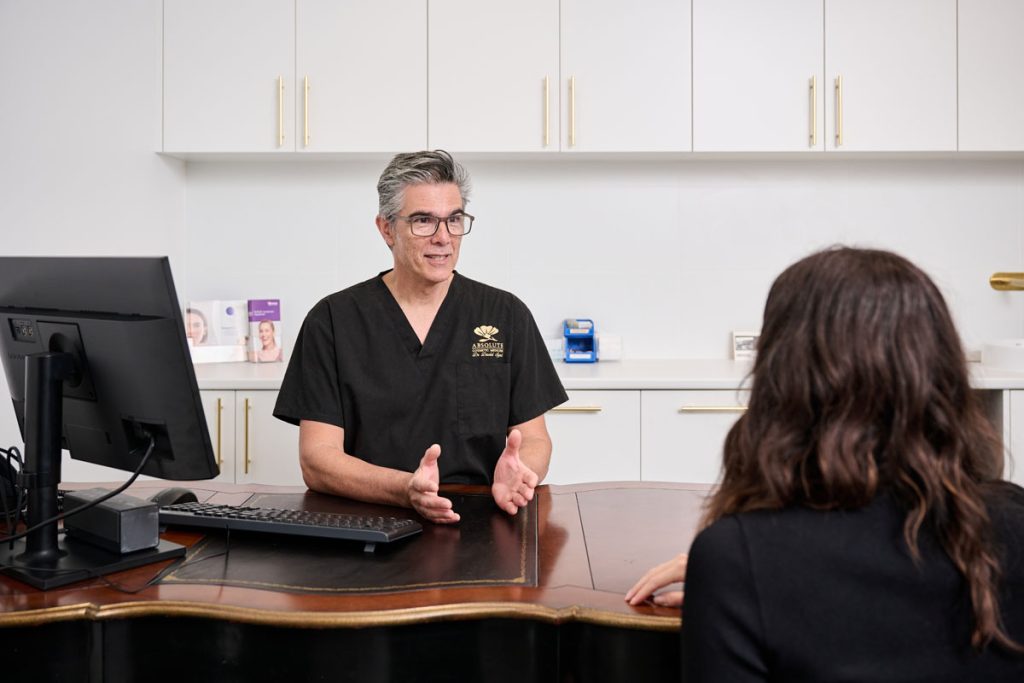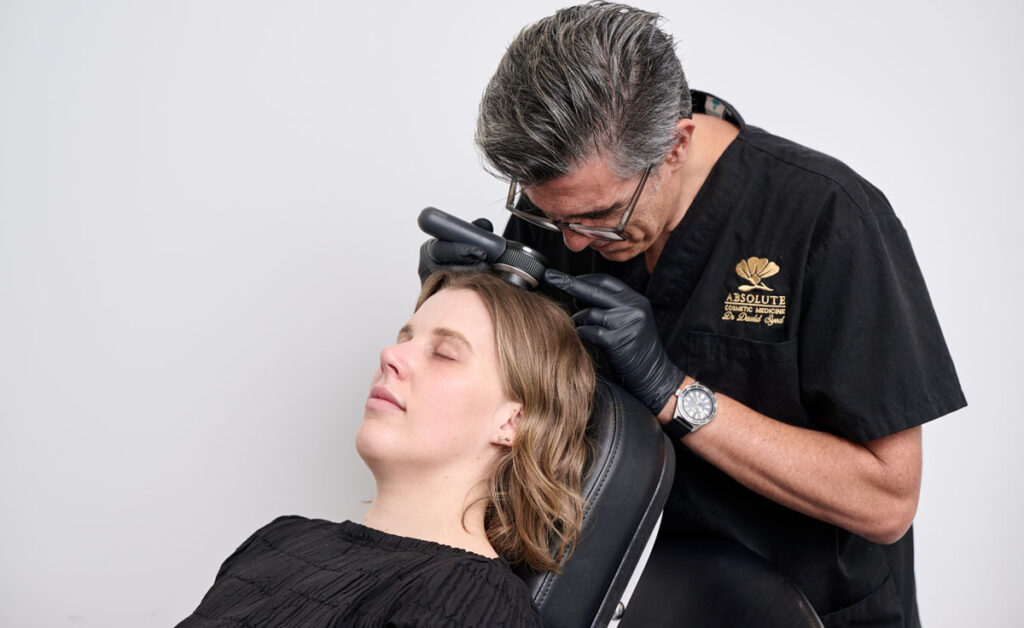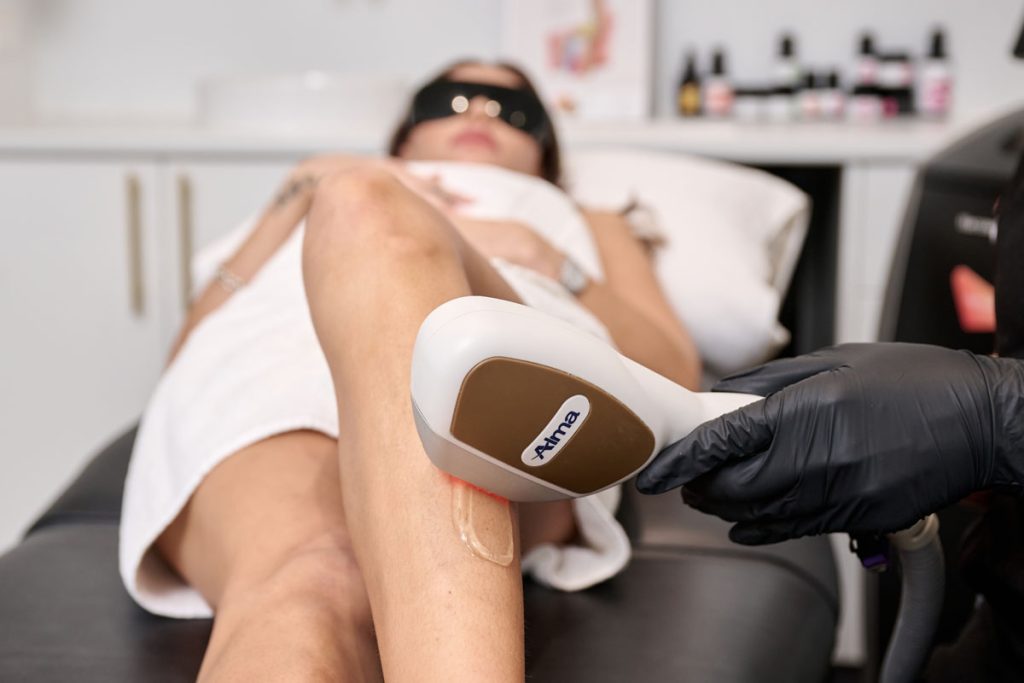Please be aware that you must have a GP referral before booking a consultation with Dr Murray.
What is Eyelid Rejuvenation Surgery?
The skin around the eyes tends to thin and lose elasticity with age. Combined with the shifting of fat pads, this can result in the appearance of puffiness under the eyes and hooded eyelids.
Eyelid Surgery, also known as Blepharoplasty or Eye Lift, is a popular cosmetic procedure that involves the removal of excess skin, fat, and muscle from the upper or lower eyelids. We also offer a skin-only Blepharoplasty option for patients specifically seeking to reduce excess eyelid skin.
Blepharoplasty is frequently combined with a Brow Lift or Forehead Lift to optimise outcomes, especially for patients with heavy brows and eyelids.
Common names
Blepharoplasty, Upper-Eyelid Surgery, Lower-Eyelid Surgery, Surgical Repair of Saggy Eyelids, Removing Eye Bags
Targeted areas
A blepharoplasty procedure targets the upper or lower eyelid
important information
Procedure Information
Procedure Type
Surgical
Cost
The skin-only eyelid lift starts from $2,200. The full Blepharoplasty is between $4,400 and $6,600*
*excluding theatre fee, post-surgical garments/cream, post operative medications. An all-inclusive fee will be discussed at time of consultation with Dr Murray.
Treatable Area's
Upper eyelids and lower eyelids
Improvement
Eyelid surgery can improve puffy lower eyelid “bags” and reduce the wrinkling of the skin to reduce the appearance of hooded eyelids.
Recovery Time
Patients typically have the option to return to work approximately eight days after undergoing a blepharoplasty procedure. The sutures from the blepharoplasty are typically removed on the seventh day post-surgery. However, it’s important to note that the recovery timeframe can vary from person to person and should not be regarded as an absolute duration.
Payment Options
Absolute Cosmetic Perth offers multiple payment options including, and not limited to; Cash, Credit Cards (Visa, Mastercard etc), AfterPay.
Why Choose Absolute Cosmetic Medicine For Your Eyelid Surgery in Perth?
- Dr Murray has over 20 years of full-time experience in Cosmetic Medicine
- He has completed Blepharoplasty and Non-Surgical Periorbital Transformation training with the European College of Aesthetic Medicine and Surgery
- We work with a team of FRACS and non-FRACS doctors for eyelid surgery and related cosmetic conditions
- We are a full-time cosmetic clinic dedicated to the aesthetic field and performing eyelid treatments in and throughout Perth
- We are a WA Health Department-licensed day hospital
- Our aim is for subtle results
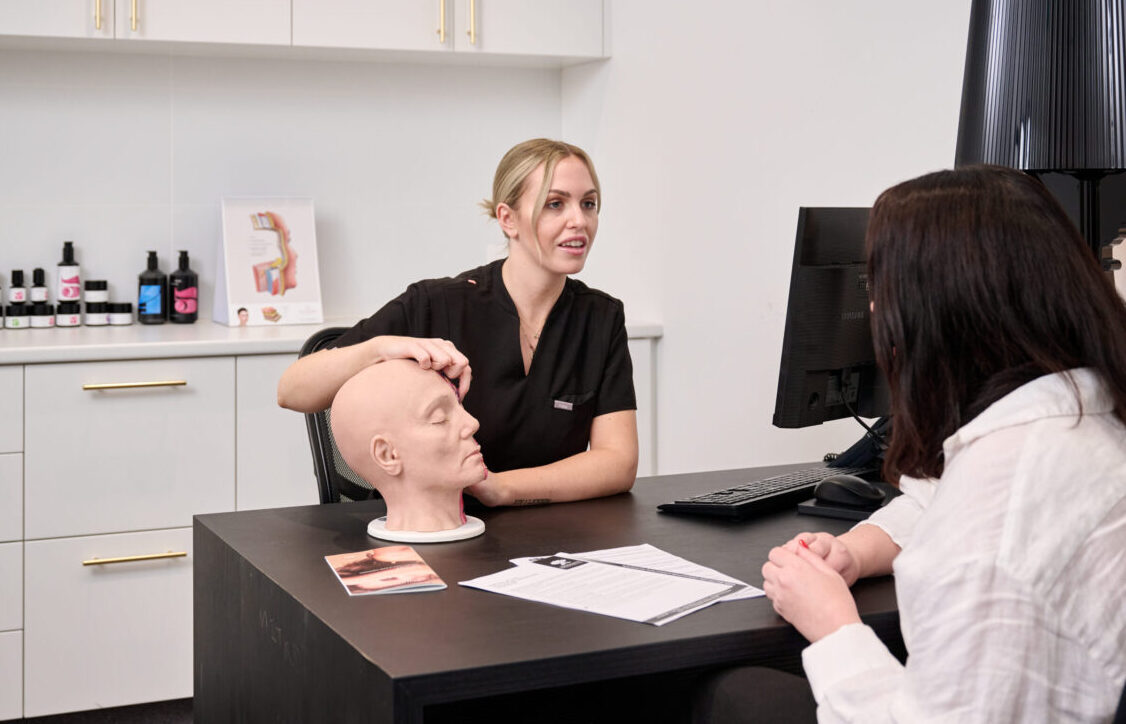
The Benefits of Blepharoplasty
The lower eyelid presents some unique considerations that are important to understand. Many patients believe they have eye bags caused by excess fat, but, in reality, they may have tear troughs. Tear troughs refer to the hollow areas beneath the eyelids that can create the illusion of bagginess in the actual eyelid. When these troughs are filled with fat or Dermal Filler, the appearance of eye bags often diminishes. For most patients, a combination of treatments is necessary – addressing the tear trough by filling it and simultaneously reducing the size of the bag. It’s important to recognise that seemingly simple issues can be more complex than they appear.
Please keep in mind that individual results can vary from person to person.
Understanding Eye Bag and Eyelid Surgery
At Absolute Cosmetic, we provide an advanced form of Upper Blepharoplasty that involves the removal of excess skin, excess fat, and muscle.
It’s common for patients to believe that the issue lies solely in the upper eyelid when, in reality, it may be a result of the brow and forehead sagging downwards. Some patients experience both heavy eyelids and a heavy brow. While they may initially wish to address only one area, it’s crucial to recognize that effectively addressing the entire concern may require a comprehensive approach. This vital concept will be thoroughly explained during the consultation. To achieve the desired results, it may be advisable to consider both an Upper Blepharoplasty and a Thread Lift.
Book a Consultation and Discover the Best Eyelid Rejuvenation Procedure For You
In accordance with AHPRA (Australian Health Practitioner Regulation Agency) protocol, it is a pre-requisite to obtain a GP referral for all cosmetic surgical procedures before scheduling a consultation with Dr. Glenn Murray. Additionally, a Body Dysmorphic Disorder (BDD) questionnaire will need to be completed to assess your suitability for the procedure. To facilitate informed discussions and address any questions you may have, informational videos will be sent to your designated email prior to your meeting with Dr. Murray. Following a second consultation with a member of our clinical team, a mandatory 7-day cooling off period will commence. During this time, we strongly encourage you to seek further information and education regarding your desired procedure, as well as consider obtaining a second opinion. After the 7-day cooling off period, you are welcome to proceed with scheduling your procedure and embark on your Absolute Cosmetic journey.
To ensure your readiness for the procedure, it is essential to be in good health and avoid blood-thinning medications like aspirin, anti-inflammatory drugs, fish oil, green tea, and turmeric. On the day of the procedure, fasting is required, meaning no food or water for 6 hours prior to your scheduled surgical start time. However, you can take a small sip of water in the morning to consume any pre-surgery medication.
Eyelid Rejuvenation Treatments
Peri-orbital rejuvenation is a combination of treatments that focus on restoring a youthful appearance to the area around the eyes. These procedures may include fat transfer, Erbium laser treatments, and thread lifts or brow lifts, depending on your specific needs and results.
Lower Eyelid Fat Transfer
Fat transfer, also known as fat grafting, is a natural approach to help replenish volume and fullness in the under-eye area, effectively reducing the appearance of hollows and dark circles. Our experienced practitioners extract fat from other parts of your body and skillfully inject it into the target area, yielding a rejuvenated and refreshed appearance.
Erbium Laser Treatment
Erbium laser treatment is an ablative laser procedure that utilizes advanced technology to revitalize the skin of the face and neck. It is highly effective in diminishing fine lines, wrinkles, and pigmentation, resulting in a significant improvement in skin texture and tone. The end result is a smoother and revitalised appearance.
Thread Lift or Brow Lift
A thread lift or brow lift is a minimally invasive procedure designed to lift and firm the skin around the eyes, diminishing the appearance of sagging or drooping eyebrows. It can be undertaken as a standalone treatment or in conjunction with eyelid surgery, tailored to suit your specific goals and requirements.
Eyelid Surgery Procedures We Offer
Upper Eyelid Surgery
Lower Eyelid Surgery
Eyelid Lifts
Non-Surgical Alternatives to Blepharoplasty Surgery
The Jett Plasma Eyelid lift is a great non-surgical alternative to create an eyelid lift and reduce the appearance of hooded eyelids. More information is available on the Non-Surgical Blepharoplasty page.
Preparing for Your Blepharoplasty
You must arrive on time to be fully admitted by the medical team.
It is imperative to strictly avoid smoking, vaping, and illicit drug use before, during, and after the procedure. Nicotine consumption during the surgical process heightens the risk of complications, infection, delayed healing, or an unsatisfactory cosmetic outcome. Please note that we maintain a stringent cancellation policy for those who continue to smoke or vape. We advise all patients to cease smoking at least 2 weeks before the procedure and to abstain for 6 weeks following the procedure. Reducing nicotine intake does not diminish the risk of complications; the most substantial health benefit is derived from quitting smoking altogether. We highly recommend and encourage the use of nicotine cessation aids during this period. For more comprehensive information regarding potential complications and guidance on quitting smoking, please refer to this resource.
It is vital to note that if you have smoked within the last 2 weeks, the procedure will be canceled, and payment will not be refunded.
To ensure your readiness for the procedure, being in good health is essential. It’s crucial to avoid blood-thinning medications such as aspirin, anti-inflammatory drugs, fish oil, green tea, and turmeric leading up to the procedure. Additionally, a blood test should be conducted at least 1 week before the scheduled procedure. A nurse will go through an extensive checklist to ensure that you are well prepared, via a pre-operative call before your procedure day.
On the day of the procedure, fasting is mandatory, meaning you should refrain from consuming food or water for 6 hours prior to your scheduled surgical start time. However, you may take a small sip of water in the morning to consume any pre-surgery medication if necessary. These precautions are taken to optimize your safety and the success of the procedure. All paperwork must be completed before the procedure and will be sighted and signed by your admitting surgical nurse.
What to Expect After Your Blepharoplasty
The surgery is conducted under light sedation (neurolept) in combination with local anesthesia to ensure the area is numbed. Typically, this procedure is completed within 1-2 hours*. Many patients opt for both upper and lower eyelid surgery simultaneously, and in some cases, additional procedures like fat transfer and a forehead thread lift may be performed. It’s important to anticipate feeling drowsy after the procedure, which is a common side effect of the sedation, but you should not experience severe pain.
After the procedure, it is essential to arrange for a competent supervising adult to collect you and provide overnight observation. If you encounter any severe pain or swelling, it should be promptly reported to Dr. Murray. The day following the surgery, you will undergo a review by our team, and it is imperative to adhere to all post-operative care instructions.
*Please note that the approximate duration mentioned may vary from case to case.
After the procedure, it’s important to prioritize rest for a minimum of 5 days and refrain from engaging in strenuous activities. Smoking must be avoided for at least 6 weeks following the procedure. Suture removal typically takes place on Day 7, and many patients can consider returning to work around Day 8, although the exact timing may vary depending on the presence of bruising and swelling.
Exercise should be avoided for the initial 2 weeks, followed by a gradual and cautious return to physical activity. The scars from the upper eyelid surgery may gradually fade over a period of 1-3 months, although in some cases, laser resurfacing may be considered to further enhance their appearance. These scars are intentionally placed within the natural skin lines and creases of the eyelid to minimize their visibility.
Possible Risks and Complications from Eyelid Surgery
In many cases, no sutures are required for the lower eyelid. However, bruising in this area can sometimes be more pronounced and last longer. For a forehead thread lift or upper eyelid blepharoplasty, small sutures are typically used and are usually removed within 5-7 days. In the case of fat transfer to the cheeks to reduce tear troughs, some swelling and bruising may occur, but this generally subsides within 1 week*.
It’s worth noting that after a blepharoplasty procedure, some patients have reported temporary blurred vision for a few days. This typically resolves on its own but should be monitored and communicated to your Absolute Cosmetic clinical team. Adhering to the guidance provided by your Cosmetic Doctor is crucial to minimizing the risk of complications.
*Recovery duration can vary from person to person and may be influenced by various contributing factors.
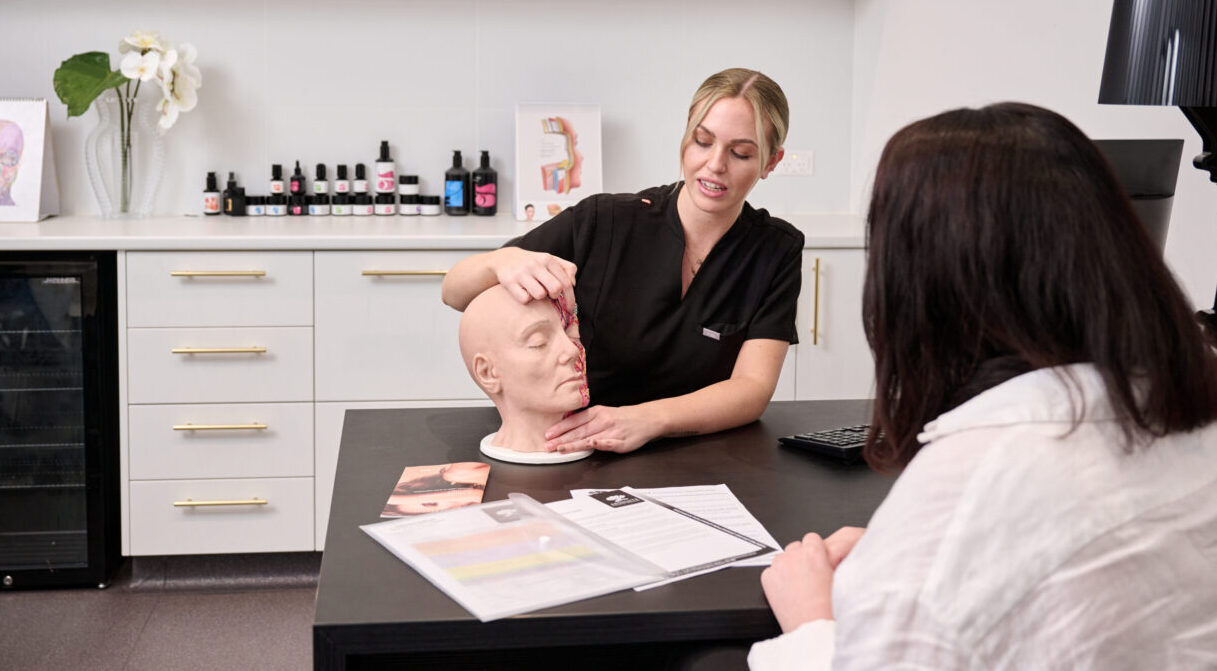
Eyelid Surgery / Blepharoplasty Surgery results
Results
- Reduce excess skin around the eye (Upper Blepharoplasty, Lower Blepharoplasty or both available)
- Reduce bags and puffiness under the eye (Lower Blepharoplasty)
- Reduce hooded eyelids and drooping eyebrows (Upper Blepharoplasty)
- Improving symmetry of asymmetrical eyelids
- Rejuvenate the eye area
Many patients find that wrinkles, skin lines and crow’s feet appear reduced.
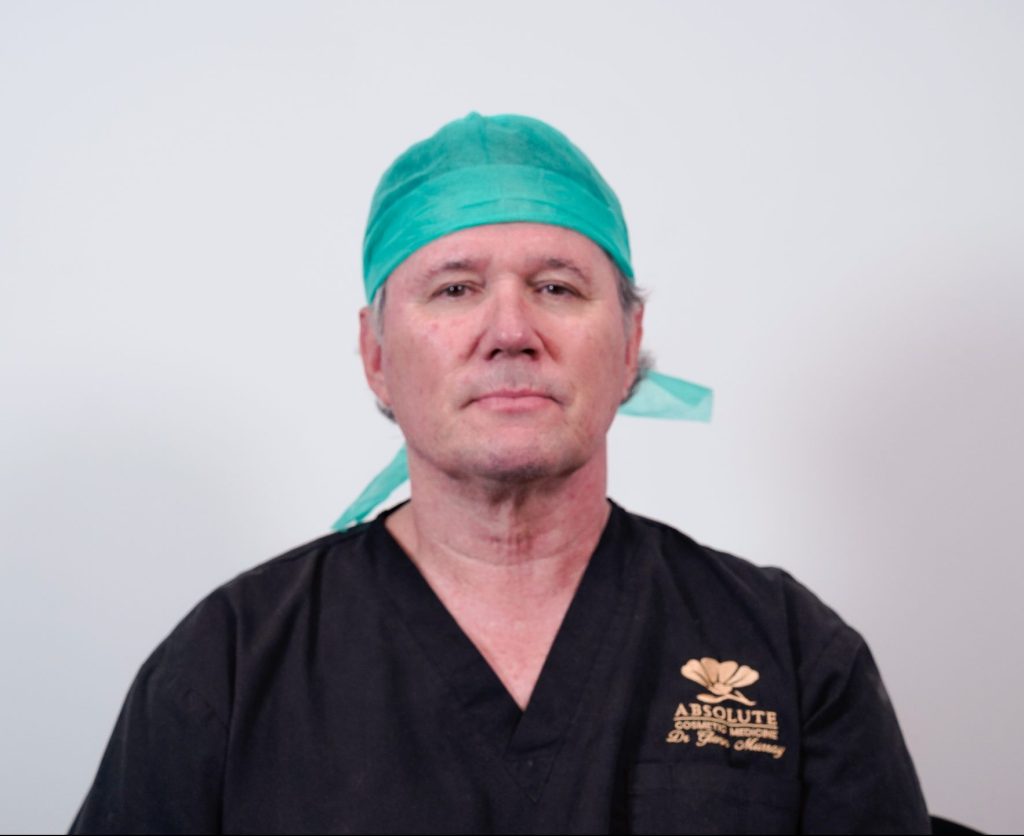 DR.
DR.Glenn Murray
Medical Director and OwnerDr. Murray (MED0001196978) leads the team of doctors and health professionals at Absolute Cosmetic, bringing over two decades of full-time experience in cosmetic medicine to his role as Medical Director and Owner of Absolute Cosmetic Perth.
*Before and After Disclaimer. All before and after photographs show actual patients of Absolute Cosmetic and are published with written consent. Images have not been digitally enhanced or altered. Outcomes shown are only relevant for each patient and do not necessarily reflect the results other patients may experience. Results may vary due to many factors including the individual’s genetics, diet and exercise. Please be advised that surgical outcomes vary, from patient to patient, and comprehensive research is crucial before making any decisions. Please read the associated treatment page for information regarding risks and recovery. All surgical before and after photographs are taken before and one year after the procedure unless otherwise specified. All surgical procedures have been performed by Dr. Glenn Murray (AHPRA Registration MED0001196978) Registered Medical Practitioner, Perth.
Book a Consultation
Book NowAny questions?
Dr. Glenn Murray (AHPRA Registration MED0001196978) Registered Medical Practitioner. General disclaimer: Patient outcomes can vary due to factors such as... genetics, diet, age, exercise, lifestyle, weight, and overall health. It’s essential to understand that all invasive surgeries come with inherent risks and require a recovery period and specific care regimen. Detailed information regarding surgical risks and complications is available here, but it is advisable to conduct thorough research and obtain a second opinion to ensure you are able to make an informed decision. Please note that the information provided is general in nature and does not constitute medical advice or establish a doctor-patient relationship. For real patient images, please visit our Before and After page. Please be advised that surgical outcomes vary, from patient to patient, and comprehensive research is crucial before making any decisions. This website contains imagery which is only suitable for audiences 18+.
